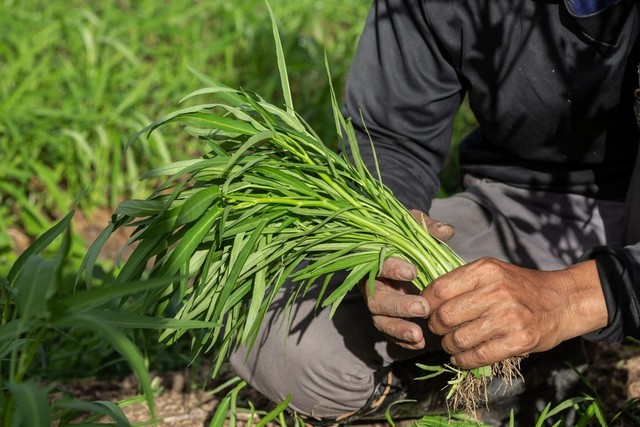Rural poverty remains one of the most persistent challenges faced by Malaysia, particularly in remote areas where access to resources and economic opportunities is limited. To address this issue, the Malaysian government introduced the Agropolitan Program in 2007, an innovative initiative aimed at eradicating poverty through sustainable agricultural development and community empowerment. Since its inception, this program has had a profound impact on thousands of rural Malaysians, significantly improving their standard of living and boosting local economies.
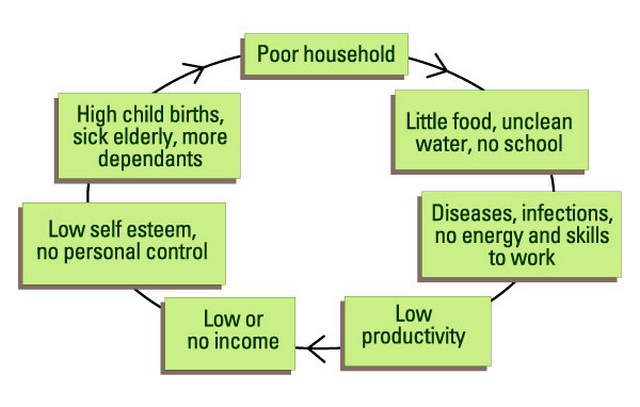
What Is Agropolitan?
The agropolitan model, also known as the Klauster Regional Model, was first introduced in 1974 by economist John Friedman. The model works by combining agricultural activities in a development project (e.g., installation of irrigation systems, improved road infrastructure, training of more efficiency agricultural practices) in an area to achieve economic improvement and the social well-being of its residents.
At its core, the agropolitan model promotes micro-planning where various stakeholders, including specific target groups, government bodies, local research institutions, and educational organisations collaborate on a shared goal of developing marginalised, backward and isolated area to become agricultural hubs and empower the residents with better job opportunities. In essence, it is a model that thrives on cooperation and community-centric planning.
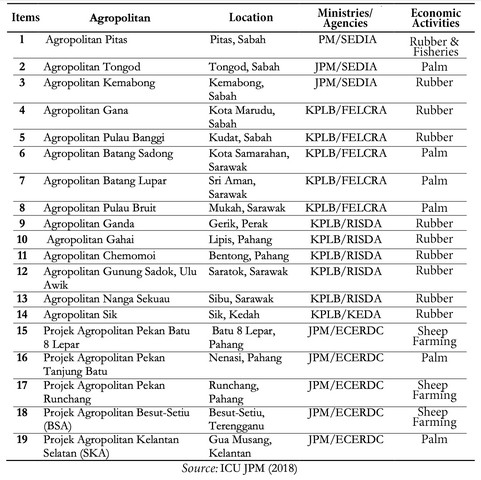
What Can Agropolitan Programs Do For Communities?
Globally, poverty remains a significant challenge, with over 1.2 billion people living in poverty. The situation is particularly severe in rural areas, where communities often lack access to basic infrastructure and economic opportunities. Without meaningful development efforts, these communities risk remaining trapped in a cycle of poverty for decades.
Addressing poverty has been central to various global initiatives, most notably the Millennium Development Goals (MDGs), which spanned from 2000 to 2015. These goals aimed to reduce extreme poverty and hunger, ensure universal access to education, promote gender equality, and improve healthcare outcomes. By the end of the MDG period, significant progress had been made:
- The number of people living in extreme poverty was halved globally.
- Child mortality rates were reduced by over 50%.
- Maternal mortality declined by 45%.
Building on this success, the Sustainable Development Goals (SDGs) were introduced with a target to eradicate all forms of poverty by 2030. Agropolitan programs, especially in countries like Malaysia, align closely with these goals by promoting sustainable rural development and reducing economic disparities between urban and rural areas.
Poverty in Sarawak: A Case Study for Agropolitan Intervention
Despite being Malaysia’s largest state, Sarawak faces significant challenges in poverty alleviation. According to the reports by the Department of Statistics Malaysia, a large percentage (40.5%) of its population still lives in rural areas as of 2019, making it the second state after Sabah with the most rural population.
Additionally, the Ministry of Rural Development’s Basic Data 2019 indicated that the poverty rate in rural areas of Sarawak to be at 1.1% as compared to the urban area at only 0.3%, making rural-urban income disparity in Sarawak still an important issue as there are still significant number of rural households in Sarawak.
Sarawak’s rural communities, especially indigenous groups, often depend on subsistence agriculture. They face limited access to social services, infrastructure, and economic opportunities, leading to high poverty levels. Due to Sarawak’s mountainous terrains, geographical isolation further compounds the issue, making it difficult for government aid to reach these communities effectively.
A past report by the Food and Agriculture Organisation (FAO) cited several additional factors contributing to rural poverty in Sarawak, including population growth, declining soil fertility, crop damage from pests and natural disasters, and the absence of younger generations from farming households. These factors lead to low agricultural productivity and, by extension, low income for rural families. The result is a situation where many rural residents are stuck in a cycle of poverty, relying on low-productivity farming and logging for their livelihoods.
The Agropolitan Program in Malaysia: Lifting Communities Out of Poverty
The initiative was spearheaded by several government ministries, including the Ministry of Rural Development (KPLB) and the Prime Minister’s Department (JPM), with the main goal of improving incomes and livelihoods through commercial agriculture. Simultaneously, the government established five development corridors; the Northern Corridor Economic Region (NCERDC), East Coast Economic Region (ECERDC), Sabah Development Corridor (SDC), Sarawak Renewable Energy Corridor (SCORE), and Iskandar Malaysia (ISKANDAR).
Each Agropolitan project typically revolves around key economic activities suited to the local environment and community needs, including:
- Animal husbandry (sheep and broiler chickens)
- Farm crops (rubber and palm oil plantations)
- Human resource development (training in business and agricultural skills)
- Physical infrastructure (construction of houses and facilities)
Participants in the program are provided with land, technical training, and continuous support, enabling them to engage in commercial agriculture. The goal is for all participants to reach a minimum household income of RM2, 000 (approximately USD 680) per month, lifting them out of absolute poverty.
The program’s focus includes not only income-generating activities like palm oil plantations, livestock farming, and high-value crop production, but also vital infrastructure development such as housing, electricity, and clean water.
Agropolitan Program in Sarawak: Successes and Future Prospects
Sarawak’s journey with the Agropolitan Program began in 2009 under the Ministry of Modernisation and Agriculture and Regional Development. The projects are situated around areas like Sri Aman, Samarahan, Mukah, Betong and Sibu, but the following are among the most notable developments:
- Batang Lupar Agropolitan: One of Sarawak’s success stories, this project by FELCRA Berhad since 2010 helped numerous households escape extreme poverty by providing an area of 1, 600 hectares of land for oil palm crops. According to the the Ministry of Rural Development Affairs and Regional Development (MRRD), it is one of the most successful intervention programs on the same level as Gawai Agropolitan, which had elevated 88.1% of households from extreme poverty status.
- Bukit Sadok Agropolitan: Since 2010, over 322.57 hectares of rubber plantations have been developed, significantly boosting the local economy. Agencies like The Sarawak Department of Agriculture (DOA), Sarawak Land Consolidation and Rehabilitation Authority (SALCRA) and Integrated Agricultural Development Area (IADA) Kalaka-Saribas-Betong have also since implemented multiple projects, expanding production to include oil palms, pepper, durian, coconut bar crops, palm oil, pineapples, cash crops and livestock.
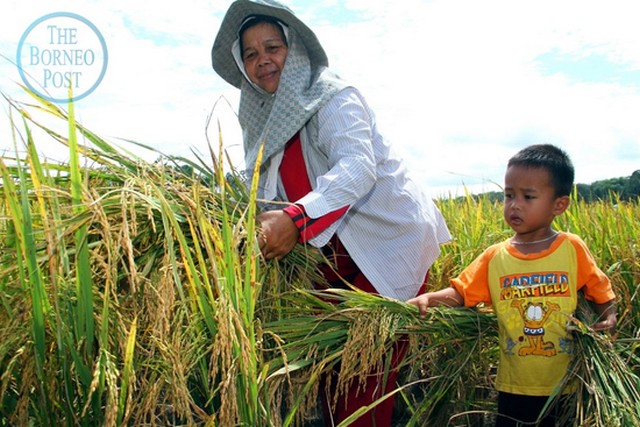
The program has made a marked difference in areas like Saratok, Betong, and Sibu, not only improving incomes but also enhancing rural infrastructure. KKDW continues to support these projects, with recent initiatives such as the construction of latex collection depots in Betong to help rubber farmers sell their produce at higher prices.
Over the years, the Agropolitan Program has delivered tangible benefits to participating communities:
- Increased Income: Participants have seen their incomes rise, allowing them to break free from poverty. By engaging in commercial agriculture, they’ve been able to sell produce at market rates and reinvest in their farms.
- Job Creation: Projects have created jobs in agriculture, agro-industry, and related fields, reducing migration to cities and ensuring local employment.
- Infrastructure Development: Improved infrastructure such as roads, housing, and public facilities has raised living standards and connected rural communities to markets.
- Community Empowerment: Training in agricultural skills has empowered participants to become self-sufficient, allowing them to establish cooperatives and manage their profits.
- Improved Quality of Life: With higher incomes, rural families now have better access to healthcare, education, and essential services.
As of 2022, the Agropolitan Program in Sarawak has been largely replaced by Projek Bersepadu Pembangunan Ekonomi Kampung (PROSPEK), which continues the mission of rural development by focusing on integrated village economic development. Ongoing projects like PROSPEK Matu (2019) and PROSPEK Lawas (2022) are set to uplift additional communities with sustainable, agriculture-based economic models alongside the existing agropolitan projects.
Simultaneously, several potential areas have also been identified for continued development within the agropolitan area of Gunung Sadok and with two proposals taken under consideration. One involves a rubber estate with an estimated area of 1, 104 hectares located in Entaih, Ulu Gerenjang and Ng Long, Ulu Krian and the other an oil palm estate with an estimated area of 2, 447 hectares in the Ulu Sebetan-Ulu Awik area.
As of December 2023, as much as RM196 million has been spent realising the Agropolitan Project, involving 1, 197 participants over 2, 732.16 hectares of land. Through the Rubber Industry Smallholders Development Authority (RISDA), the Ministry of Rural and Regional Development (KKDW) has plans to build latex collection depots in Sarawak’s Betong Division to help small rubber farmers in the area increase their income. A factory in Debak, Betong is built to process the latex collected, with upcoming plans to install high-tech facilities to boost latex quality, this generating higher income for smallholders.
While the Agropolitan Program’s legacy is still very much alive, PROSPEK offers new opportunities for rural development with a more targeted focus on specific communities. Nevertheless, the key principles of the Agropolitan Program—community involvement, infrastructure development, and sustainable economic activities—will likely continue to shape Malaysia’s rural poverty eradication efforts in the future.
A Path to a Sustainable Future
The Agropolitan Program has been a lifeline for many rural communities, lifting thousands out of poverty and creating a sustainable model for rural economic development. While the program evolves into PROSPEK and other initiatives, its legacy remains, demonstrating that with the right support, rural Malaysians can build prosperous, self-reliant communities.
As Malaysia continues its journey towards poverty eradication, these programs will play a crucial role in ensuring that no one is left behind.
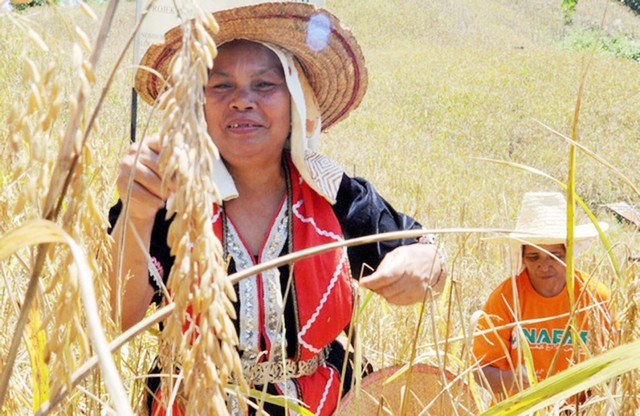
References
- Agropolitan Project: Role in Rural Development and Poverty Eradication
- SDG for Malaysian States: Population under Poverty Line
- Microfinance services and poverty reduction in Sarawak, Malaysia
- Conceptual Frameworks in Geography: Case Study Supplements Case Studies of the Third World (M Barke 1991)
- The Socioeconomic Impacts Of Agropolitan Project In The Rural Areas Of The East Coast Region Of Malaysia
- PROSPEK set to replace agropolitan programme
- PROSPEK programme approved for Betong with devt budget of RM9 mln
- KKDW Plans To Build Latex Collection Depot In Betong — Rubiah
- RM196 juta bagi realisasikan Projek Agropolitan KKDW: Rubiah
- Peranan Program Agropolitan Runchang Dalam Memperkasakan Kualiti Hidup Orang Asli


